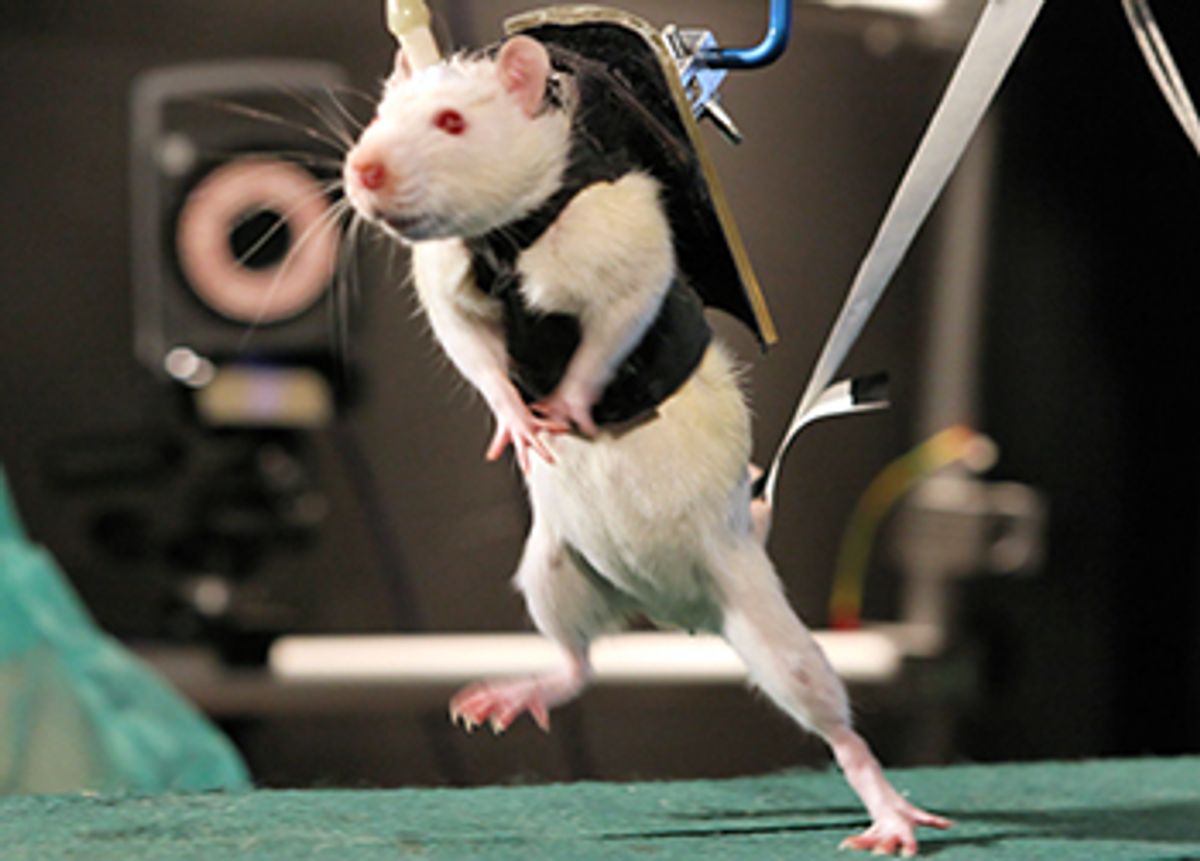Grégoire Courtine, a neuroscientist at the Swiss Federal Institute of Technology Lausanne has just awarded his laboratory with the "world-cup of neuro-rehabilitation." And they probably deserve it. He and his colleagues at the Swiss Federal Institute of Technology Lausanne showed this week that they can teach a rat to walk again after nearly completely severing the spine and paralyzing the hind limbs of the animal.
It's important to note that when the researchers paralyzed the rats, they left part of the spinal cord intact. But the lesion they performed knocked out all of the direct connections between the brain and the spinal cord. In order for the rats to learn to walk again, the researcher had to encourage the brain and the spinal cord to make certain structural changes, which involved convincing the two organs that they were still talking to each other.
They injected a slurry of chemical agents into the defunct stretch of spinal cord to mimic normal chemicals signal from the brain. After the injection, the researchers electrically stimulated the spinal cord and the muscles. With this, all the signals were there, although they were being supplied from the outside. The next logical step was to let the animal try to walk and see if, over time, it could make new connections between the spinal cord and the brain, replacing the artificial signals.
The engine was idling. To put it in gear, the rats were slung into a supportive robotic device that held them in place while allowing them to move freely. Lured with a piece of chocolate, and trained over multiple 30-minute trials, the mice learned to walk again. Some even ran and walked up steps.
Electrical recordings from the motor cortex, and later experiments where they interrupted activity in this region and also in the lower spinal cord, confirmed that the rats were using both their brains and their spinal cord to walk. The group has concluded that assisted training encouraged the growth of new projections between the two organs in only two weeks. Courtine calls it a "100% recuperation of voluntary movement."
And his hope is that this one small step for the rat kingdom will turn out to be a giant leap for mankind. If all goes well, he expects to be trying a similar therapy in clinical trials with humans just two years from now.
Listen to Courtine explain:
And make sure to check out the rodent athletes in action.



